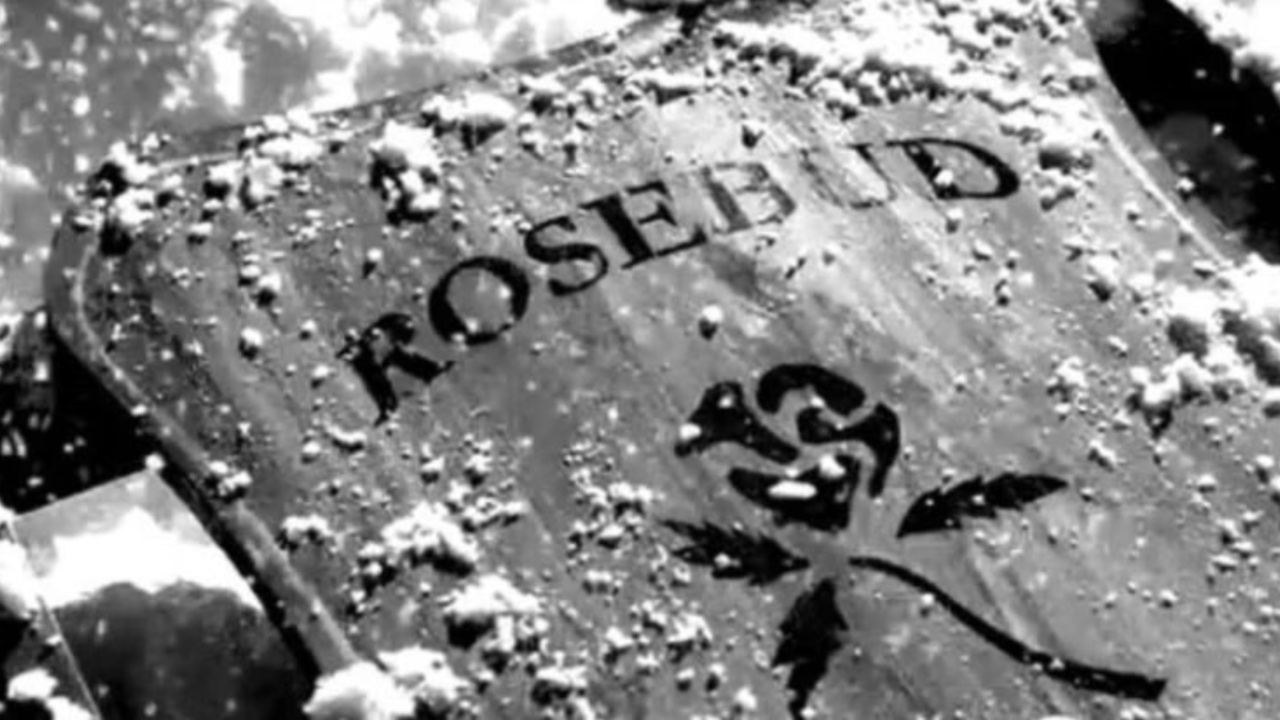Citizen Kane follows the life of Charles Foster Kane, a wealthy publishing tycoon, charting his rise to power and eventual downfall. Directed and starred in by Orson Welles in 1941, the film opens with Kane’s death as he utters the mysterious word “rosebud.” This final word triggers a journalistic investigation into his life, although only the audience uncovers its full significance. The narrative structure, which loops from Kane’s death back to his life, creates a compelling mystery that remains central to the film’s enduring legacy.
The film is often regarded as the greatest ever made due to its innovative storytelling. It presents Kane’s life non-linearly, showing his journey from a happy childhood in Colorado to a powerful, yet morally compromised figure in New York. His adult life is characterized by political ambition, media manipulation, and personal betrayal, culminating in his lonely death at his mansion, Xanadu. The connection between “rosebud” and Kane’s past serves as a narrative anchor, highlighting the emotional depth of his story.
Rosebud Reveals Kane’s Lost Innocence, Childhood Joy, And The Futility Of Adulthood
The climax of the film reveals that “rosebud” was the name of Kane’s childhood sled, discarded and burned after his death. This moment is deeply ironic, as journalist Jerry Thompson’s quest to uncover its meaning throughout the film ends in failure. The burning sled symbolizes Kane’s lost innocence, linking his adult failures to a long-forgotten moment of childhood joy and highlighting the futility of his adult pursuits.

Rosebud represents the happiness and simplicity of Kane’s youth, contrasting sharply with his adult life filled with betrayal, deceit, and loneliness. Despite immense wealth and influence, Kane clings to this childhood memory as his only source of emotional solace. His failed relationships, abandonment by friends, and isolation at Xanadu underscore the emptiness of his material success. The destruction of Rosebud further symbolizes the impermanence of his legacy.
Rosebud Symbolizes Kane’s Resilience, Rebellion, And The Enduring Consequences Of Lost Innocence
Beyond nostalgia, Rosebud also reflects Kane’s resilient spirit. In childhood, he resists authority, striking his guardian with the sled, a metaphor for his lifelong defiance. Even amid moral failings as an adult, Kane’s drive and resistance remain central to his character. The sled thus encapsulates both innocence and an unyielding, rebellious streak that defines his complex persona.
Kane’s story mirrors the life of media magnate William Randolph Hearst, who faced financial decline and personal isolation similar to Kane’s fate. Hearst’s response to Citizen Kane, including suppressing publicity, highlights the film’s controversial impact. Kane’s narrative also resonates with broader cultural critiques of the American Dream, drawing parallels to literary works like The Great Gatsby, where wealth and ambition lead to ultimate disillusionment.
Ultimately, Citizen Kane presents a tragic moral tale about ambition, greed, and lost innocence. Its ending emphasizes that material success cannot compensate for emotional and moral failures. Rosebud has become a lasting symbol in popular culture, representing the human desire for lost innocence and the consequences of unchecked ambition. Welles’ film remains a powerful commentary on life, power, and the fleeting nature of legacy.



